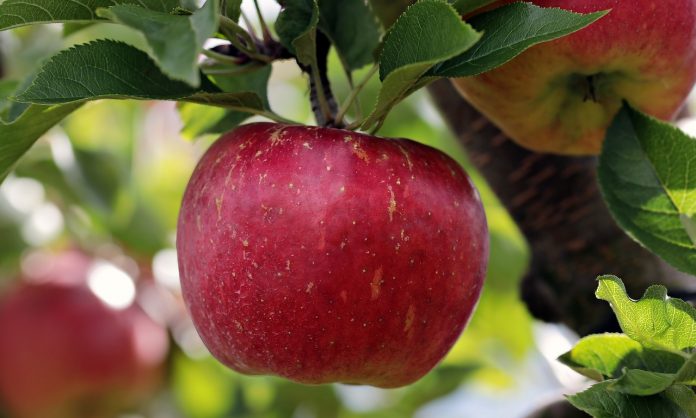Harvest time in the home orchard is near. But when exactly is the right time to start picking your apples?
Learn how to determine when your apples are ripe enough to pick based on variety, color, firmness, seed coats, smell, taste and ease of removal.
Variety
The first step in determining the right time to pick your apples is knowing when the variety you’re growing typically matures in your region to peg down a general time frame for harvest. Temperature, moisture and sun exposure will all play a role in how quickly your fruit ripens but knowing the average maturity date is a good place to start. Maturity dates can range anywhere from July to November depending on which variety you’re growing.
You can use estimates from local orchards for different varieties to pinpoint a more exact maturity date.
Color
Color is a good indicator of ripeness. However, the correct color to indicate ripeness varies from one variety to the next. After determining the correct coloration of the type of apple you’re growing, evaluate your apples based on the desired flush and ground colors of that variety at full maturity.
Evaluating the foreground color or flush is easy. It’s apparent and layers over the ground color or primary color of the apple. The ground color can be a little tougher to evaluate in some varieties because it’s almost completely covered by the flush.
The ground color varies across apple varieties. It is often green or yellow, a washed-out variation or sometimes nearly white. In some cases, the ground color will be the color of the whole apple when it’s mature and other colors are not present.
Firmness
The firmness of an apple is another indicator of maturity. Apples that are ripe should still be firm, but not hard. When you grip an apple to check how firm it may indent slightly, but should not be soft or mealy. Apples that are too soft are overripe.
Seed coats, smell and taste
Mature apples have brown seed coats. However, you can’t tell the color of an apple’s seed coats from the outside. When you think your apples are close to reaching maturity, sample an apple from your tree to check the coating of its seed coats, its smell and its taste. Seed coats should be brown, the fragrance of the apple should be apparent and the taste should be sweet and match the flavor profile expected of the apple variety.
Based on the results of your sample you can determine whether it’s time to pick your apples or leave them on the tree for a few more days.
Ease of removal
When you think your apples are ready to pick try removing a few from the tree. They should not be difficult to pick. Grasp the fruit firmly in the palm of your hand, place your thumb near the stem, twist and lift upward. The apple should easily come free from the tree. If you have to use a lot of force to pick your apples, you’re harvesting them too early.
Make sure the stems remain on your apples to ensure lasting freshness. Apples without stems need to be eaten quickly as they do not keep for long.
Additionally, setting rather than dropping apples in a bucket to prevent bruising when harvesting apples will increase storage time and prevent rotting.
One final consideration for picking apples is to make sure the fruiting spurs — short compressed stems that produce flowers annually — are not removed. Loss of spurs results in loss of fruit next season.
Related Content
- How to find and harvest crabapples
- How to choose ideal apples for your needs
- How to put pick-your-own apples to good use














